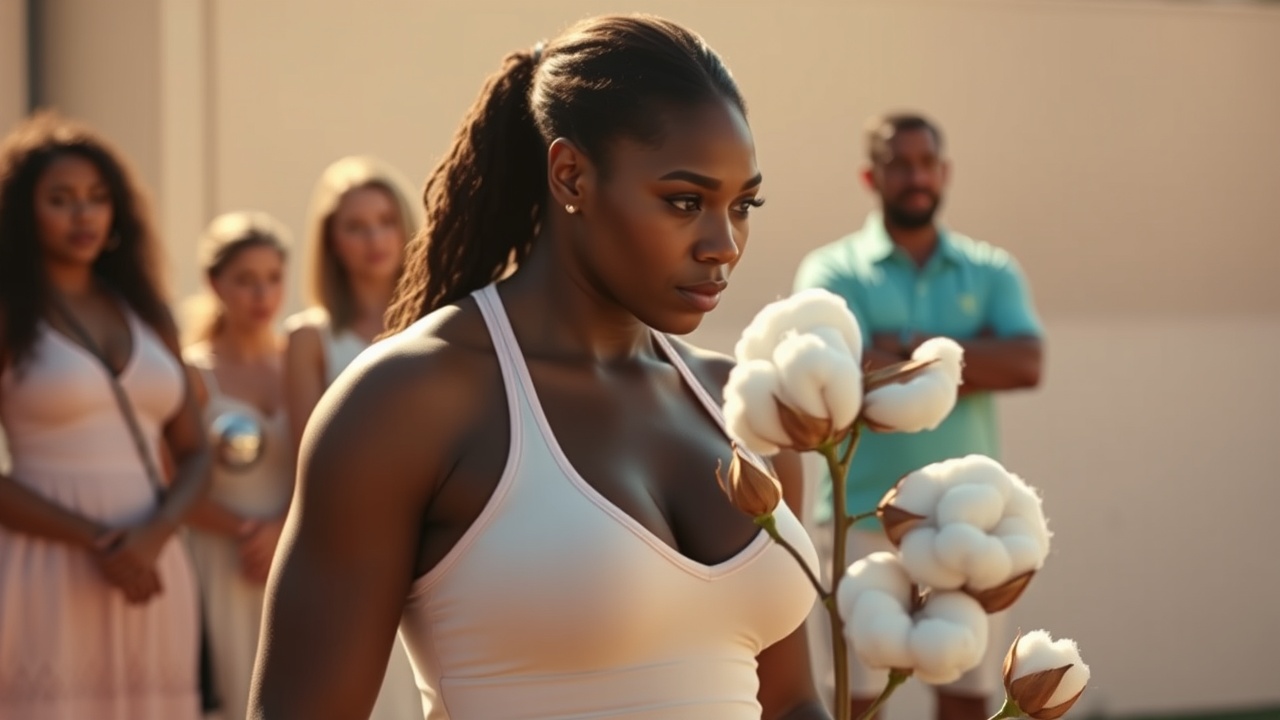Serena Williams Faces Backlash Over Cotton Plant Comments
Serena Williams is facing backlash after a recent social media post where she voiced her unease about a cotton plant used as hotel decoration. This incident has ignited discussions about her perceived hypocrisy, especially given her past associations with cotton in her personal life.
Post-Retirement Activities
Since her retirement from professional tennis following the 2022 US Open, Williams has remained active, launching a podcast alongside her sister, Venus Williams, to reflect on their experiences in the sport among other subjects. Recently, she also opened up about her struggles with weight loss post-motherhood, a journey that resonates with many women.
Controversial Comments on Cotton
Amidst her recent pursuits, a video showcasing a decorative cotton plant led to a wave of criticism. In the clip, Williams queried her audience’s thoughts on the use of cotton—an industry historically tied to slavery in the United States. She expressed discomfort with the choice, stating,
“Okay guys, how do we feel about cotton as decoration? Personally, for me, it doesn’t feel great.”
The initial response to her posts is typically positive, but this particular statement struck a nerve, prompting a range of reactions. Supporters have defended her viewpoint, suggesting that discussions surrounding the legacy of slavery are deeply personal, and everybody processes such conversations differently.
Criticism and Defense
Critics argue that Williams’ discomfort seems misplaced, pointing out the 13th Amendment abolished slavery nearly 160 years ago. Some perceive her comments as a ploy for attention. Additionally, critics highlighted that Williams owns a sculpture by artist Radcliffe Bailey that features cotton and addresses slavery’s narrative, contradicting her recent discomfort.
In defense of his wife, Alexis Ohanian, Williams’ husband, emphasized the symbolic weight of Bailey’s artwork, labeled “Monument for a Promise,” which depicts a donkey carrying a trunk over a mound of cotton. Ohanian argued that the art conveys a distinct meaning that is not comparable to the hotel’s decorative use of cotton. He criticized those who equate her reaction to owning the sculpture as a flawed argument.
Conclusion
While the dynamic surrounding Williams’ comments highlights the complexities of public perceptions and social media discourse, it also raises questions about accountability and consistency. One could suggest that, should Williams take issue with cotton’s representation and its historical links, she might want to reflect on her own consumption of cotton products.
This incident serves as a reminder of how quickly and broadly opinions can spread online, especially when figures like Williams, who often advocate for various causes, find themselves at the center of criticism.




